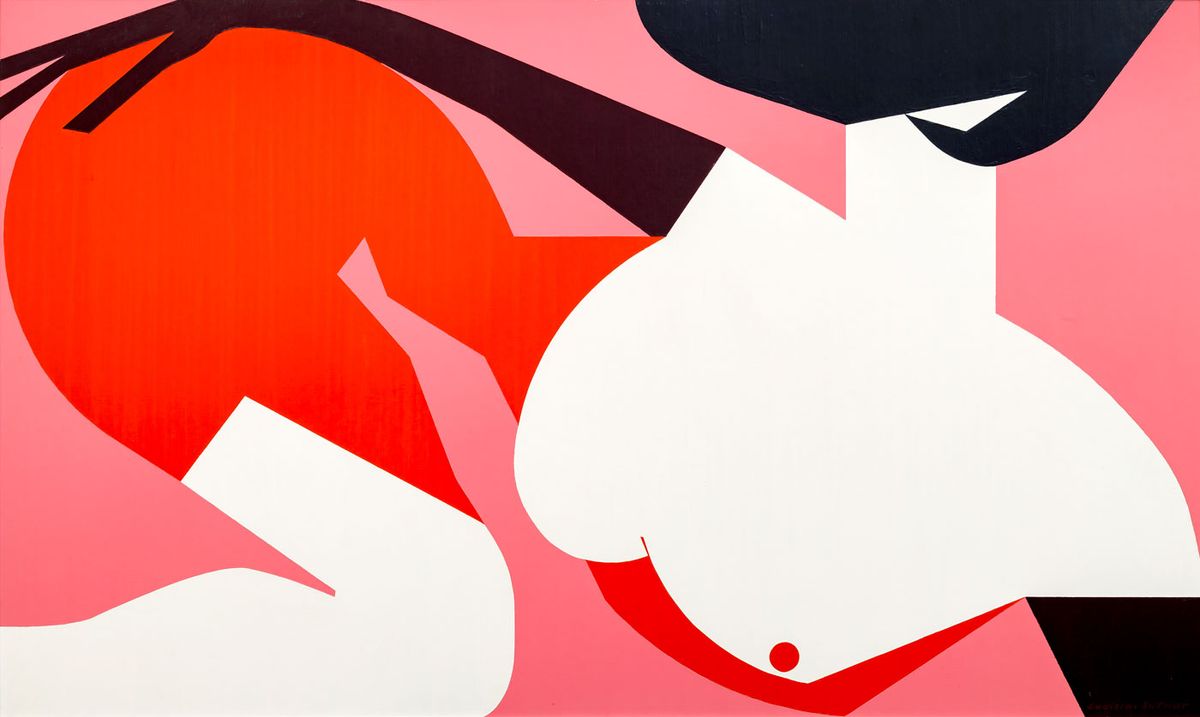
acrylic on masonite
1964
lower right
109 × 180 cm
frame
This monumental painting comes from the studio of the award-winning Czech artist and globally recognised product and graphic designer Ladislav Sutnar. He came to the United States of America in 1939, settled in New York and worked there until his death. Since the 1920s, he had been dealing with modern approaches and possibilities of visual communication, whilst his goal had always been maximum intelligibility and the ability to quickly transmit essential information. These efforts led him to create his own innovative visual language based on consistent practical and theoretical foundations. His free work is all the more interesting and exclusive for collectors. His development toward the cycle of Venuses began deep in the European avant-garde, characterised by efforts to liberate the human body and tendencies towards female emancipation. The topic of Freud’s psychoanalysis, which was reflected in the collages of his friend Karel Teige, was probably no stranger to him either. However, Sutnar was not only interested in sexuality from the point of view of libido and subjective experience. It interested him primarily as a principle of modern visual communication. Although the moral dogmas and conventions of Puritanism persisted in the American society of the 1940s and 1950s, in reality, its culture manifested features dictated by the masses of consumers of industrial civilisation, influenced by the new media of mass communication. Sutnar noticed this social change from the very beginning and faced it, as he did with everything in his life. He created the cycle The Strip Street inspired by women whom he previously met in the vicinity of his own house. In the first years of his work in America, he took up residence in a building between Fifth and Sixth Avenues on 52nd Street, which had been a brothel during the war years. In the 1950s and 1960s, when he was working on the series, he was already an established artist in the US, and the whole emerging generation of American artists met in his studio, such as Andy Warhol or Philip Pearlstein, who was no longer fettered by the prejudices of the previous traditionalist generation. Sutnar devoted himself to the Venuses cycle from the end of the 1950s until his death, creating a series in which the utopia of modern times is expressed timelessly, based on the constant evaluation of culturally framed social values. The presented painting was not published in the catalogues for Sutnar’s Venuses, however, the artist’s drawing from the archival documentation has been preserved, where the presented work is captured with the description “Pink” under No. 7 among the horizontal paintings from 1962–1965 (the archival documentation was published in the catalogue Ladislav Sutnar: U. S. Venus (I. Knobloch / T. Pospiszyl / K. Císař / M. Juříková, Prague 2011, p. 99)). Assessed during consultations by doc. T. Pospiszyl, Ph.D., and PhDr. K. Srp. The expertise of PhDr. J. Machalický is attached.







